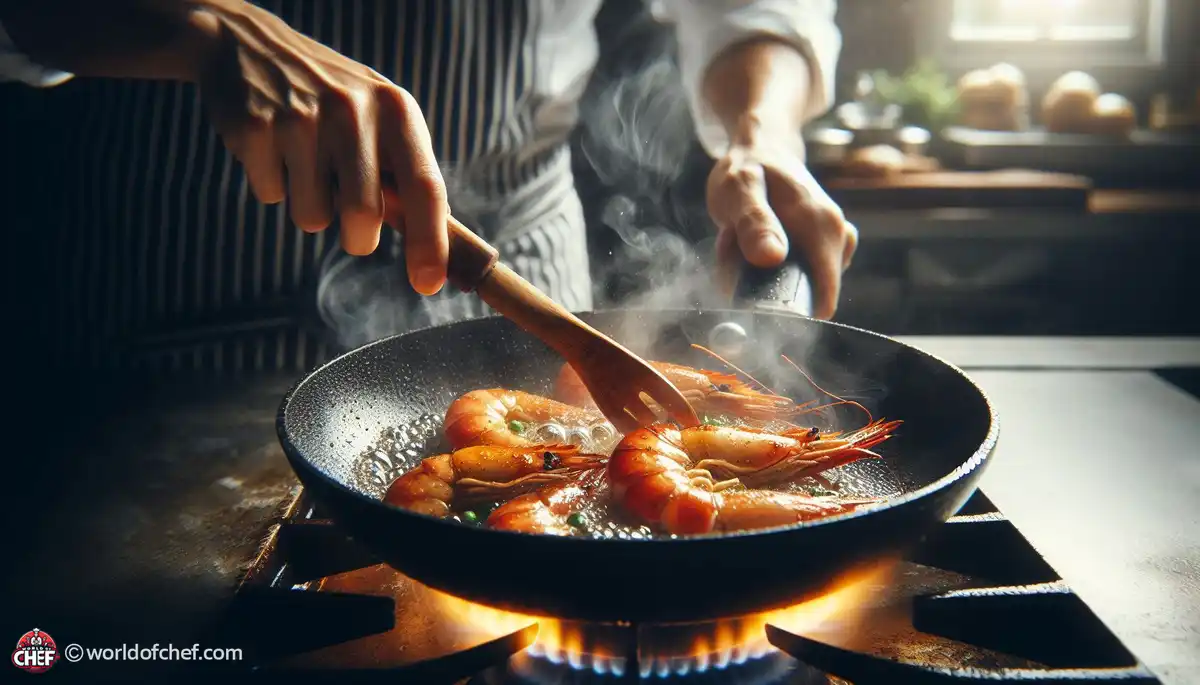
Simmering with Spices: Infusing Flavor into Your Dishes
Emery Donley - Oct 8, 2024 - 8 min read


There are a few exquisite techniques in cooking, and one of them is the technique of sauteing seafood. It's not enough to heat up a pan and throw some fish inside; it is a fine dance between heat, time, and flavor. Only when one understands the science behind the technique can it master the art of sauteing seafood.
The most crucial point is the selection of seafood for successful sauteing. Use fresh fish, which has firm flesh with a mild flavor profile. Good candidates for sauteing are salmon, trout, tilapia, and snapper because they stand high heat in the pan.
Proper preparation of your seafood before sauteing is essential. Start by patting the fish dry using paper towels to remove excess moisture. This is a crucial step because it helps you achieve a beautiful sear on the surface of the fish. Season the fish with salt and pepper to bring forward the natural flavors.
The key to good sauteing is that an excellent sear needs to be obtained in seafood. This can be done by heating a thin layer of oil or clarified butter in a skillet and heating it on medium to high until it shimmers. Handling the seasoned fish fillets carefully, not to overcrowd the skillet in order to fit them into the skillet.
Temperature is always a crucial element when it comes to sautéing seafood. Too high a heat may burn the fish on the outside and still leave it raw on the inside, while low heat will make it soggy and unattractive. Monitor the heat and adjust it to prevent overcooking and browning.
Timing is the essence in the sautéing of seafood. Fish fillets are rather thin, so they cook quick and need to be watched so they do not become overcooked. Generally, fish takes 3-4 minutes on each side depending on the Fish Fillet thickness. It is done when it flakes easily with a fork and is opaque.
Seasonings enhance the flavor of sautéed seafood. For example, you can find the best Flavor Combinations by using herbs, spices, and citrus zest. Fresh herbs like parsley, dill, and cilantro will give brightness to the dish, while spices like paprika, cumin, and garlic powder add a lot of depth and complexity to the dish.
Sauces complement sautéed seafood well as they add moisture, flavor, and eye appeal. Classic choices are the simple pan sauces with white wine, lemon juice, and butter; they are complementary to the fish's own flavor. Try variations with creamy dill sauce, mango salsa, or Thai coconut curry.
The finishing touch to take that sea food sauté over the top visually with garnishes. Fresh herbs, citrus wedges, and microgreens will lend lovely additions of colors and textural contrasts and freshness to the dish. By all means be creative on your choice of garnish. Give wings to culinary genius now!
Sauteing seafood is relatively easy, though there are a few mistakes that could undermine the final quality of the dish. The most common mistakes with cooking seafood is overcrowding the pan and ending up Steaming Fish instead of searing it. A better approach would be to cook fish in batches, if necessary, and then leave enough room for every fillet in the skillet.
The other issue faced by home cooks while pan-frying seafood is that of sticking. The fish will not stick to the pan if heated properly and lightly coated with oil or butter before putting the fillets. You should not move the fish around so much when in the pan because it breaks the sear.
If you end up overcooking your fish, it's nothing to worry about. You can still use it and make it tasteful by flaking the overcooked fish and adding it as a filling to tacos, salads, or even sandwiches. You can also chop it up and put it in pasta dishes or seafood chowder to add more flavor and texture.

Emery Donley - Oct 8, 2024 - 8 min read

Russell Comeaux - Oct 8, 2024 - 8 min read

Walter Backus - Oct 7, 2024 - 8 min read

Samantha Thames - Oct 7, 2024 - 6 min read